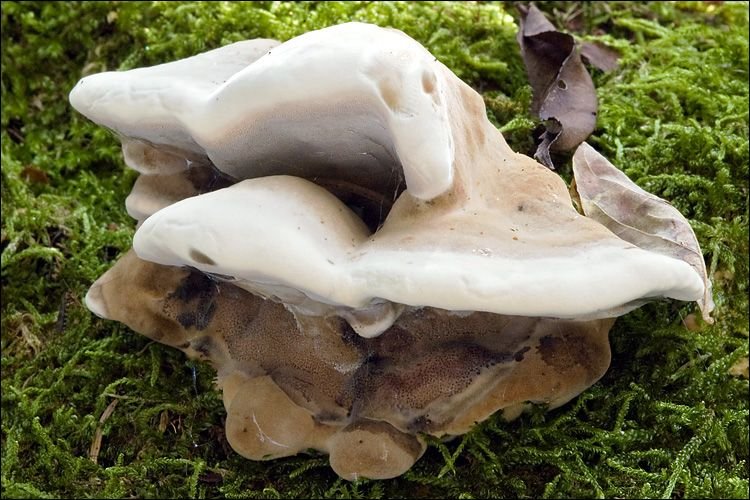Smoky polypore (Bjerkandera fumosa)
- Division: Basidiomycota (Basidiomycetes)
- Subdivision: Agaricomycotina (Agaricomycetes)
- Class: Agaricomycetes (Agaricomycetes)
- Subclass: Incertae sedis (of uncertain position)
- Order: Polyporales (Polypore)
- Family: Meruliaceae (Meruliaceae)
- Genus: Bjerkandera (Bjorkander)
- Type: Bjerkandera fumosa (Smoky polypore)
- bierkandera smoky

Mushroom Tinder fungus smoky (lat. Birkandera fumosa), grows on stumps and forest deadwood. Usually prefers to settle on the rotten rotting wood of deciduous trees. This fungus feeds on the current decomposition of dead wood residues. From spring to autumn, the fungus can also parasitize living fruit-bearing trees. Usually, he chooses a willow and a young ash tree, and sometimes an apple tree, as a location.
The mushroom is decorated with a thick hat up to two centimeters thick. Its diameter reaches twelve centimeters. The surface of the cap is lighter than the edges. The fruit mushroom body acquires a yellowish color over time. The blunt-shaped edges of growing mushrooms become sharper as they grow. This mushroom at the time of active fruiting produces whitish-cream spores.
The young mushroom is characterized by increased friability. As it ages, it acquires a slightly brownish color.
The smoky tinder fungus is considered an inedible wood-destroying fungus. Its appearance signals the beginning of the disease of the tree.
Mushroom Trutovik smoky is well known to both professional mushroom pickers and gardeners. Gardeners, when this fungus appears on garden cultivated fruit trees, take measures to eliminate it. The tinder fungus that appeared in the garden can hit all fruit trees. Most often they settle on old, sick and weakened trees. Affected trees are destroyed, since it is impossible to remove the smoky tinder fungus from them. His mycelium is reliably protected by a tree trunk. The destruction of the trunk by the mycelium occurs from the inside. All stumps affected by these parasitic fungi should also be uprooted from the garden. The smoky tinder fungus often settles on the abandoned stumps, harming healthy trees.









